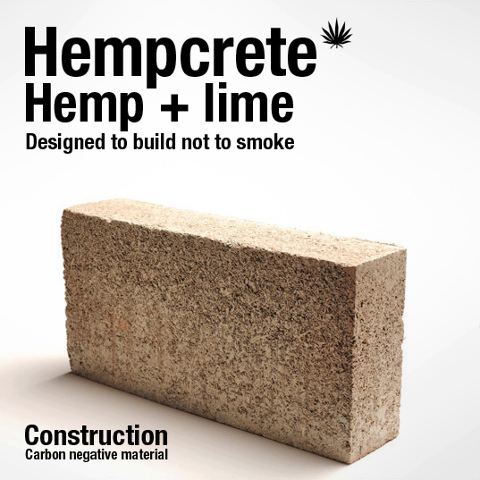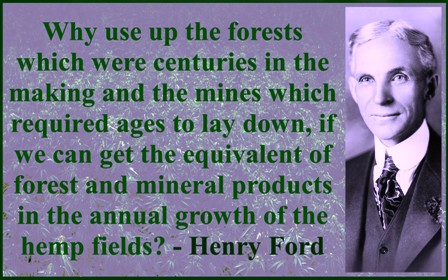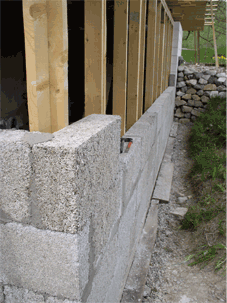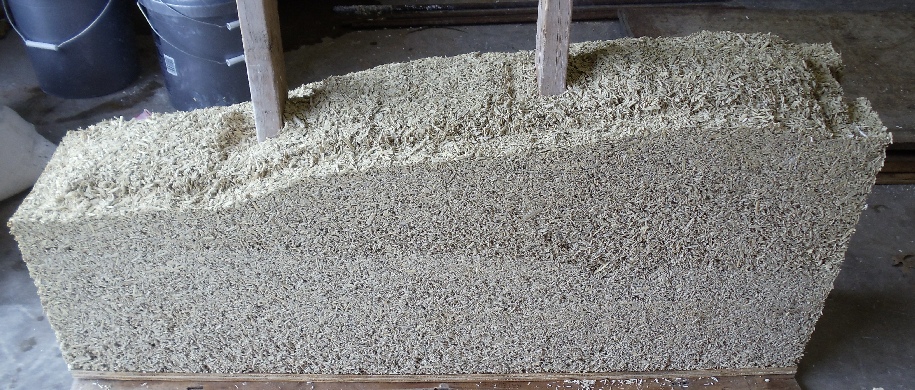What is Hempcrete?
Hempcrete is a generic term for an old basic recipe of lime, hemp & water that has been used for decades in Europe for the restoration of old wattle & daub or cob construction. A good reference source is “Tom Woolley – Hemp lime construction. A guide to building with hemp lime composites” or “Steve Allin (second edition) – Building with Hemp” for sale at our store for Au $ 40 + postage – please email us.
Hempcrete has been used by the Romans and in Japan centuries ago. These structures are still standing!
Unlike concrete or masonry, hempcrete does not crack severely under movement. Hence its suitability to be used in earthquake area’s. It is also about the seventh of the weight of concrete. Lime is weak under tension and develops micro cracks under movement that seal when moisture comes into contact with free lime. Concrete or masonary will let go suddenly under movement which is why you get big noticeable cracks.
Hemp in Hempcrete
Hempcrete consists of hemp shiv, a short length hemp stalk by-product, and lime-based binder. Industrial hemp with a THC content less than 1% is grown and used for fibre growth. Hemp is an excellent growth crop with many farming and environmental benefits:
- A hemp crop produces nearly 4 (four) times as much raw fibre as an equivalent sized tree plantation.
- Trees take approximately 20 years to mature… Hemp takes 14 weeks.
- Hemp needs no pesticides because it is unpalatable to insects
- Hemp needs no herbicides because it grows too quickly for any weed to compete
- Hemp can grow in virtually any climate and soil condition, and is excellent for reclaiming otherwise unusable land. Hemp crops rejuvenate poor soils.
- Between 1.7 – 1.9 tonnes of CO2is absorbed from the atmosphere for each tonne of hemp cellulose produced (typically 10 tonnes of hemp straw per hectare is grown)

Carbon Sequestration
Hempcrete is a carbon sink. With 80-90% of its composition as hemp shiv, the majority of CO2 is sequestered by hempcrete is in the hemp growth with the remainder absorbed in the process of “carbotitation”. This is the process where the lime-based binder absorbs carbon from the air continuously over time, petrifying the hemp shiv. Each tonne of lime-based hempcrete is estimated to absorb and sequester 249 kg of CO2 over a 100 year lifecycle. Generally, hempcrete is estimated to sequester 110kg per cubic metre which will change depending transportation use.
HEMPCRETE has no equal as a natural building product, sequestering carbon dioxide for the life of the building. Created by simply combining water, hemp aggregate and a lime-based binder it produces a building product with excellent thermal insulating and acoustic properties. The insulation forms the entire wall with the load bearing timber frame fully encased. Hempcrete is not just an insulator – it buffers temperature and humidity, prevents damp and mould growth, making the building a comfortable healthy environment.
“IT IS A BIT DEARER, BUT A LOT BETTER!”
Hempcrete buildings last as long as a castle and save energy for ever.
It is fire and termite resistant, lightweight and forms a hard wall surface yet is vapour permeable to help reduce humidity and prevent condensation – a truly natural product.
People that live in hempcrete houses do not need to run airconditioners or heaters all day to keep a comfortable home. Regular insulation requires constant energy input – hempcrete doesn’t. The way energy costs are rising, that’s a massive yearly cost saving through power conservation. At the same time, less energy use, less pollution AND carbon sequestration by hempcrete – your hempcrete project will be carbon negative.





